Florida Currents

FLORIDA KEYS ELECTRIC COOPERATIVE

Keys Electric Cooperative celebrates
and his 18 years of dedicated work as chief operating officer at the co-op. CEO Scott
and the entire FKEC team wish him a happy retirement. Page 6



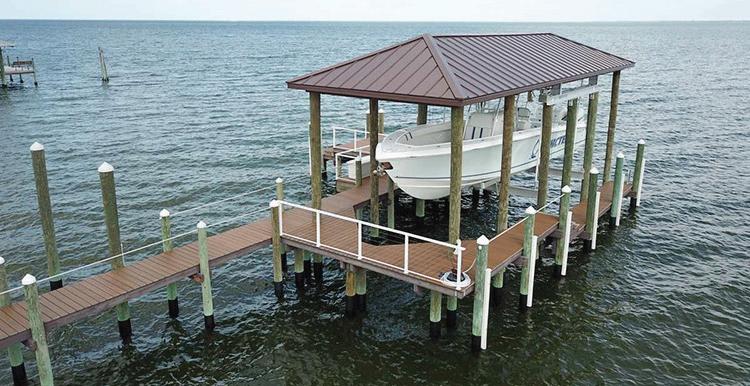


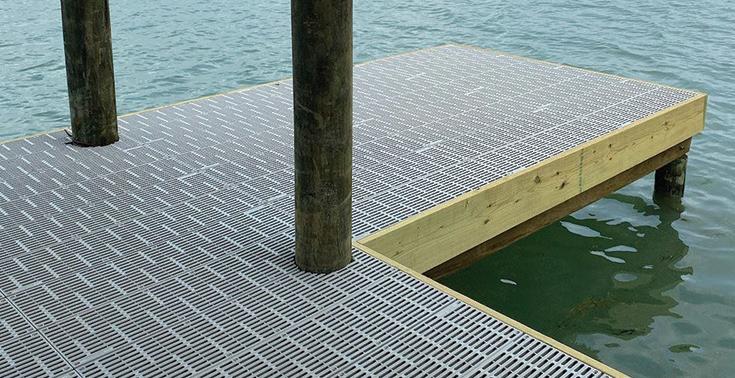









FLORIDA KEYS ELECTRIC COOPERATIVE

Keys Electric Cooperative celebrates
and his 18 years of dedicated work as chief operating officer at the co-op. CEO Scott
and the entire FKEC team wish him a happy retirement. Page 6














March 2024 • Volume 13, No. 5
CEO Michael Shepard
VICE PRESIDENT OF CONTENT Leon Espinoza
EDITORIAL DIRECTOR Mike Teegarden, CCC
DEPUTY EDITORIAL DIRECTOR
Noble Sprayberry
SENIOR EDITOR Jennifer Paton, CCC
FLORIDA CURRENTS EDITORS
Chasity Anderson, CCC; Valeri Pearon
ASSISTANT EDITORS Victoria Hampton, CCC; David Herder, CCC
ASSOCIATE EDITOR
Nina Todea
PUBLICATIONS PRODUCTION
SENIOR MANAGER
Elizabeth Beatty
PUBLICATIONS COORDINATOR
Alyssa McDougle
Members acknowledge that $4.31 a year, plus postage, is the cost to publish 12 issues a year of FLORIDA CURRENTS ISSN 23276304 (USPS 8300). Published by Pioneer Utility Resources Inc., 5625 NE Elam Young Pkwy. Ste. 100, Hillsboro, OR 97124—a not-for-profit Oregon cooperative corporation—the magazine serves the communication needs of consumerowned electric utilities in Florida. Preferred Periodicals postage paid at Hillsboro, OR 97123 and at additional mailing offices.
Postmaster: Send address changes to 5625 NE Elam Young Pkwy., Ste. 100, Hillsboro, OR 97124-6422.
HOW TO CONTACT FLORIDA CURRENTS
Subscription services:
Nonmember subscriptions $15 U.S. a year; $25 foreign a year. Prepayment required. Allow 4-8 weeks for first issue. Identify local edition desired. Have a problem receiving your magazine? Utility members should contact their utility office. Nonmembers call 503-357-2105 or email mailingdept@pioneer.coop.
Back issues:
Back issues and extra copies are $3 each, prepayment required. Supply is limited. Identify edition, month and year. Call first to check availability. Contact Pioneer Utility Resources: P.O. Box 1306, North Plains, OR 97133-1306; 503-357-2105; email: mailingdept@pioneer.coop.
DISPLAY ADVERTISING INQUIRIES
American MainStreet Publications 611 S. Congress Ave. Ste. 504 Austin, TX 78704-1714; 800-626-1181 or 512-441-5200; amp.coop.
© 2024 Pioneer Utility Resources. All rights reserved. Reproduction in whole or in part without written permission is prohibited. Direct reprint requests to editor@floridacurrents.com or for more information, visit www.pioneer.coop.
For additional content, search @FloridaCurrents on your favorite social media sites and floridacurrents.com.
Starting March 6, Florida Keys Electric Cooperative members can reserve a free native tree by completing an easy online process and learn the best place to plant their tree for maximum energy-saving benefits. Trees can reduce your energy costs up to 20%






In conjunction with





While the o er lasts, RESERVE YOUR FREE TREE AT www.arborday.org/ oridakeyselectric.
Trees are limited and available on a first-come, first-served basis.


Member Owned Since 1940
Karl Wagner
District 4, Marathon, President
Michael H. Puto
District 4, Marathon, Vice President
Cale Smith
District 3, Islamorada, Treasurer
Gretchen Holland
District 1, Key Largo, Secretary
James J. Boilini
District 1, Key Largo
David C. Ritz
District 1, Key Largo
Craig Belcher
District 2, Tavernier
Joseph H. Roth III
District 2, Tavernier
George D. Hertel
District 3, Islamorada
CONTACT US:
305-852-2431 | 800-858-8845
Pay by Phone 1-855-385-9912 www.FKEC.com
Mailing Address:
P.O. Box 377, Tavernier, FL 33070
MEMBERS
FKEC offers a Residential Rebate Program through which members can earn up to $500 in rebates for completing qualifying energy improvements. Learn more at www.FKEC.com.
For Florida Keys Electric Cooperative, embracing the cooperative model signifies our status as an autonomous, not-for-profit utility shaped by the influence of our members. Autonomy and Independence are among the seven core principles guiding electric cooperatives. These principles distinguish us from other utilities and reinforce our commitment to prioritizing the needs of our members. However, autonomy doesn’t equate to isolation.
While we operate independently, we also enjoy the benefits of collaborating with other electric cooperatives. We stand united, lobbying for fair government representation, defending common interests, and sharing resources at both state and national levels.
Active participation in the Florida Electric Cooperatives Association (FECA) is one example of our commitment to advocating for the needs of our members within the state.
Collaborating with our 17 fellow state co-ops, we address Florida-specific issues.
As part of this statewide organization, representatives from each participating Florida electric co-op convene annually in Tallahassee to discuss matters and policies impacting our industry. Please read more about this annual legislative event on the facing page.
FKEC is also an active member of the National Rural Electric Cooperative Association (NRECA), where we stand with nearly 900 other U.S. co-ops, uniting to represent your interests and collectively voicing concerns and tapping
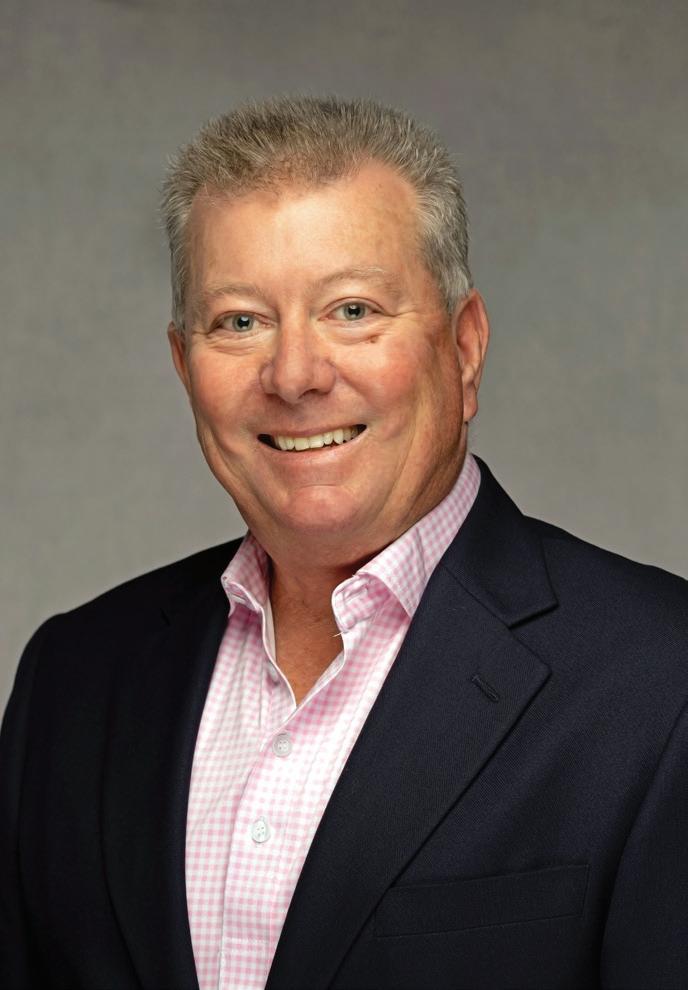

SCOTT NEWBERRY Chief Executive Officer
into shared resources.
The adage “there is strength in numbers” resonates strongly within our cooperative networks. Our membership in these organizations empowers us to collectively represent and defend the values and interests of our members while upholding the integrity and principles integral to our success.
Together, national electric cooperatives deliver reliable and affordable electricity to over 21.5 million businesses, homes, and schools across 48 states. In our state alone, we collaboratively serve 2.7 million Floridians.
This cooperative alliance underscores our commitment to providing our community with efficient and reliable electric services. n
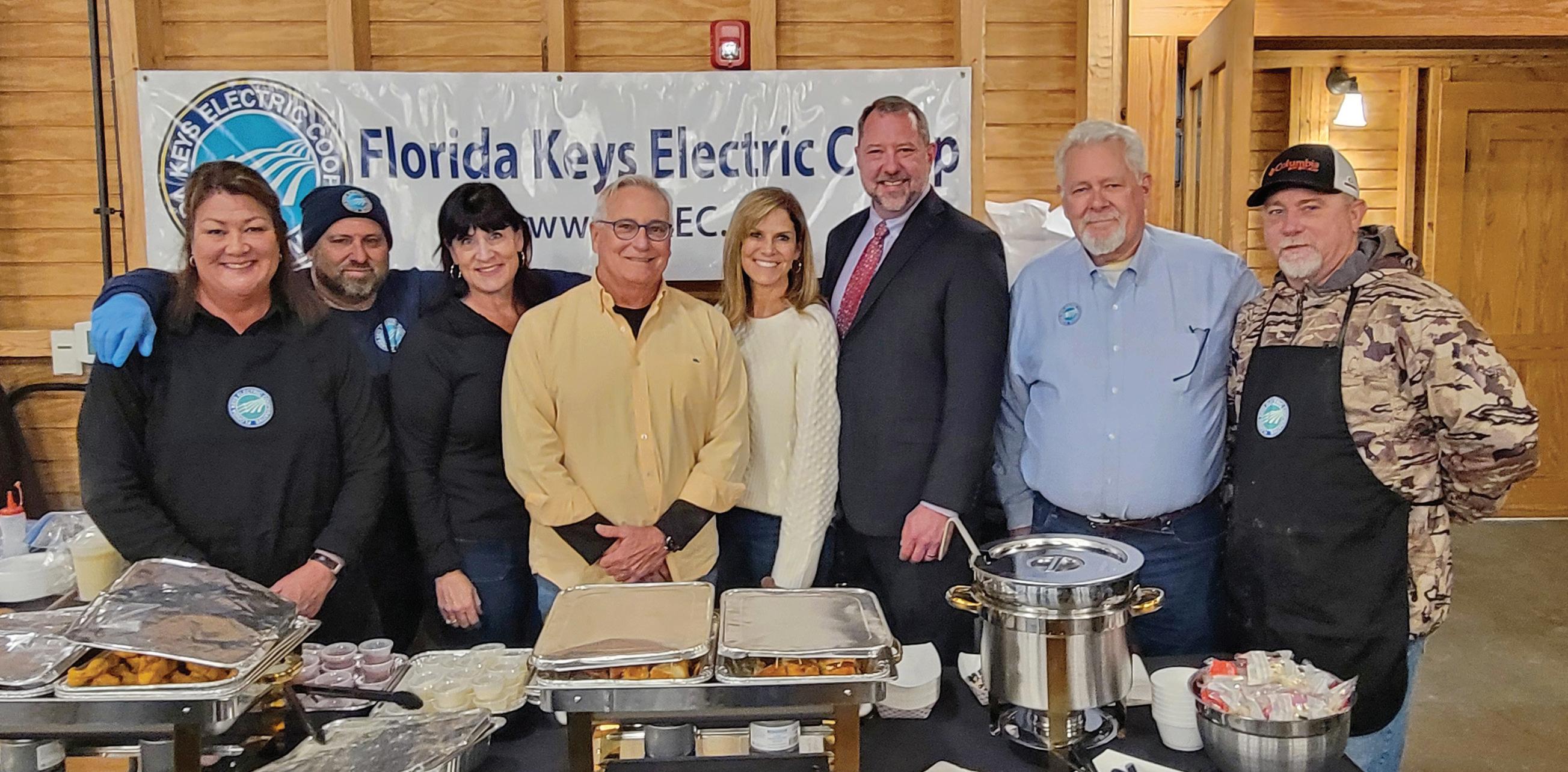
In January, FKEC and 15 other electric co-ops from across the state participated in the Florida Electric Cooperatives Association (FECA) annual legislative cookout. This event is a valuable opportunity to foster connections with legislators representing our membership. The cookout remains a steadfast reflection of the hometown values and principles on which the electric cooperatives were founded.
Each participating co-op showcases culinary delights representing their areas’ unique flavors to entice attendance and create a fun environment to engage with Florida government officials. This year FKEC’s Steve Lachowicz, Ryan Lachowicz,
Phill Guinta, Jason Richards, Kim Jones, and Maria Jones offered lobster reubens, lobster bisque, fried Mahi Mahi, conch fritters, and key lime cake.
As members of FECA, two representatives from each participating Florida electric co-op convene in Tallahassee throughout the year to deliberate on matters and policies affecting our industry. FKEC’s CEO, Scott Newberry, and Director Craig Belcher, currently hold positions on the statewide board, with Gretchen Holland serving as an alternate.



Our involvement in FECA enables us to collectively champion and safeguard the values and interests of our members. This commitment ensures that we uphold the integrity and principles that define the cooperative way. Together, we strive to maintain a strong and unified front in serving and representing our communities and every valued co-op member. n










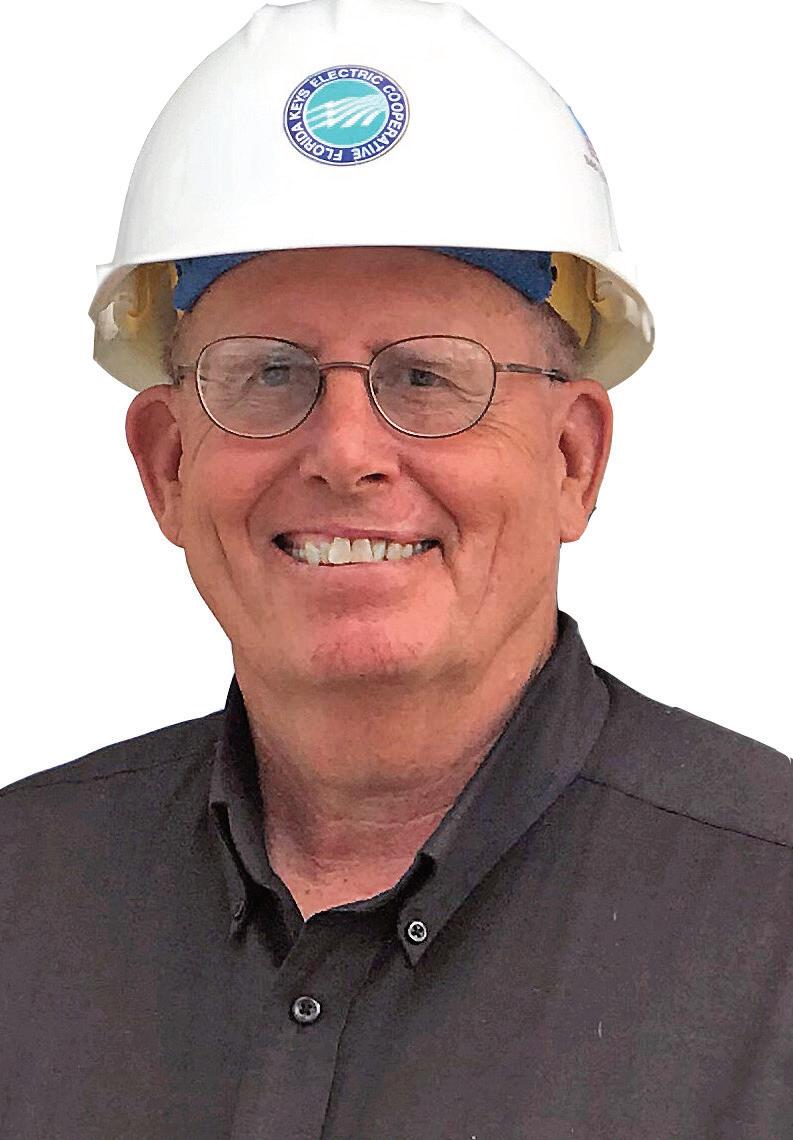
“I greatly appreciate John’s exemplary service to FKEC. He has been involved in improving every aspect of FKEC’s utility operations, from storm hardening to system automation to storm restoration. His efforts and those of his team have made this co-op a much more efficient and effective utility. On behalf of everyone at FKEC, we thank you, John.” — said CEO Scott Newberry.
The entire FKEC family, including our staff, employees, and board of directors, extends our heartfelt gratitude to John Stuart for his remarkable 18 years of dedication as the company’s first Chief Operating Officer (COO). We sincerely thank him for his profound contributions.
Joining the co-op team in 2006, John was appointed to fill the newly created position of COO. Over his career at FKEC, he coordinated, planned and directed our electrical system’s engineering, maintenance and operations. His contributions extended to researching and coordinating our post-storm restoration protocol, notably the use of base camps to accommodate and support external storm restoration crews. An effort that proved indispensable in FKEC’s successful power restoration after Hurricane Irma.
“I’ve worked with John for 15 years and his vision was instrumental in the technological advancements at our Electric Utility. He had a forward-thinking approach which improved our member’s reliability tenfold,” said Director of Engineering Peter Amendola, PE, MSEE
In addition to his responsibilities as COO, John fell into the role of resident company historian when he spearheaded the creation of a history booklet and presentation with a significant display of archived documents to commemorate FKEC’s 75th anniversary in 2015. He has also shared updated versions of the co-op’s history with numerous community organizations throughout the years.
John started in the electric utility industry in 1976 at Pacific Gas and Electric Company in California, where he held various engineering, operating,
and management positions. Eighteen years later, he spent seven years as Vice President of Customer Services and Energy Delivery for St. Joseph Light & Power in Missouri.
CFO Cris Beaty expressed his gratitude for John’s guidance remarking, “John’s industry experience and knowledge have been a valuable resource to me, especially in my early years when I was new to the industry. John was always there to impart his wisdom and guidance.”
In 2001, John diverted from the utility business to move to the Keys and work as the co-owner of ‘It’s a Dive’ dive center. In addition to administrative and fleet maintenance duties, he dive certified over 200 people before returning to the power industry by joining the FKEC team.
Since arriving in the Keys, John and his wife, Jill Hayes, have actively participated
in the Upper Keys community. John has served on the boards of the Rotary Club of Key Largo, Habitat for Humanity in the Upper Keys, Key Largo Chamber of Commerce and the Florida Keys Wild Bird Center. In recognition of his years of service above self, the Key Largo Rotary Club recently recognized John with an Honorary Conch award.
Environmental Services Manager Sara Hamilton added, “It’s been a privilege to work with John both at FKEC and in a volunteer capacity in the community. He’s always been generous with his time and knowledge and encourages others to give back to the community. I’ve always appreciated the trust and support he’s given me to do my job.”
Looking ahead, John and Jill plan to travel more and explore in their motor home. While embracing retirement, John will continue to lend his electrical industry expertise as a consultant for an electric utility service company.
Thank you, John, for your unwavering commitment to the co-op and our local community. You will be missed. We wish you and Jill nothing but smooth roads and great memories ahead. n
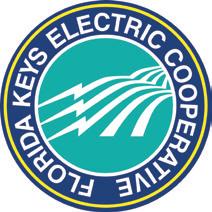











Florida Keys Electric Cooperative is happy to announce the reelection of Gretchen Holland and Joseph H. Roth III to the FKEC Board of Directors, where they will continue their dedicated service for three-year terms. This election was conducted in accordance with FKEC bylaws, which state that if only one qualified member from a district is nominated and unopposed, that member shall be declared elected without the need for an election.
As a member-owned cooperative, FKEC adheres to seven cooperative principles, including democratic control, which ensures every member has an “equal say.” In contrast to investorowned utilities, your voting rights are not determined by the




number of shares you own. In a cooperative, it is about having one membership and one vote.
An important use of your vote is electing representatives to the FKEC Board of Directors. These directors tirelessly work to represent your best interests and steer the cooperative toward enhancing the quality of the power delivered to you and your community.
To learn more about the directors who protect your interests and access board meeting agendas, minutes, and board packets, visit www.FKEC.com/about-us/. Your participation is essential in shaping the cooperative’s future and ensuring reliable and efficient power service in the Upper and Middle Keys. n





Gretchen Holland was appointed to serve on FKEC’s Board representing District 1, Key Largo, in 1999 and has since been reelected at three-year intervals. A stalwart member, Gretchen served as the Board Vice President from 2005 to 2018 and was elected Secretary in 2019. She is also a Credentialed Cooperative Director and has earned her Board Leadership Certificate.





After a 35-year career in the title insurance business, Gretchen retired from Coral Reef Title Company, leaving her daughters to continue the company’s success. Currently, her eldest daughter and grandson oversee the operations of the two offices.







Gretchen has worked extensively to support our local community. She served as the past Secretary of FKEC’s volunteer board for the Members Charitable Trust and was the past Chairperson of the Key Largo Chamber of Commerce. Beyond her dedication to FKEC’s board, Gretchen contributed her expertise to the Board of Directors of TIB Financial Corporation and TIB Bank of the Keys. Additionally, she holds the esteemed title of a charter member of the Rotary Club of Key Largo.


Joseph H. Roth III initially assumed the District 2, Tavernier, seat, filling a vacancy in 2017. Following his appointment, Joe was elected by his district members the following year.
In addition to his dedicated service, Joe has attained his Credentialed Cooperative Director and Board Leadership certificates.
Joe is an alumnus of Coral Shores High School and holds a Bachelor of Science degree from Florida State University. He has owned and operated Regan Roth Insurance since 1999, catering to clients across the Florida Keys and the state.






Before that, he owned and operated Holiday Isle Watersports. Beyond business, Joe is immersed in the community, chairing numerous boards. His extensive experience includes serving as the past president and current director of the Upper Keys Rotary Club, past assistant governor of Rotary District 6990, past president and current treasurer of the Islamorada Chamber of Commerce, regional board director for Centennial Bank, ten-year chairman of the Plantation Key School Advisory Council, and current president of the Islamorada Fishing Club.






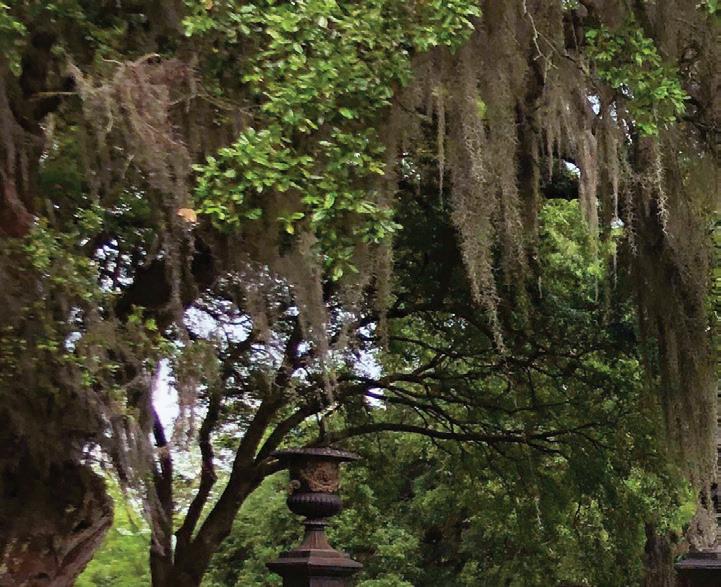





From the French Quarter to the hometown of Mark Twain, experience the best of this legendary river. On an 8 to 23-day journey, explore Civil War history and travel to the epicenter of American music as you cruise in perfect comfort aboard our brand new American Riverboat™.












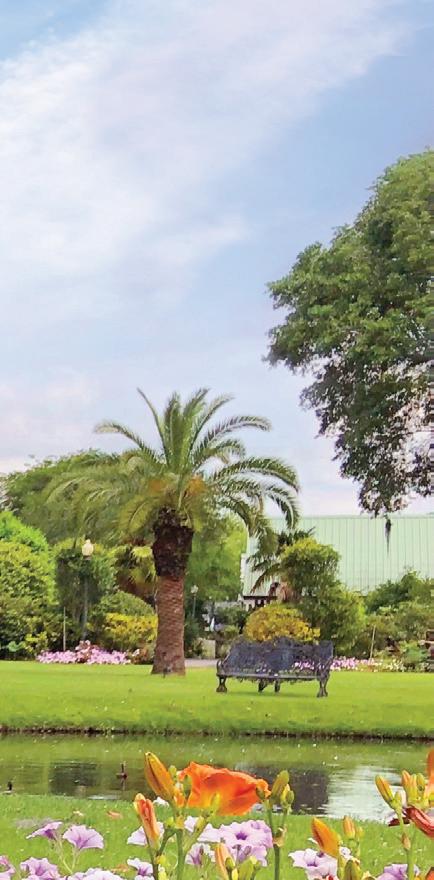



















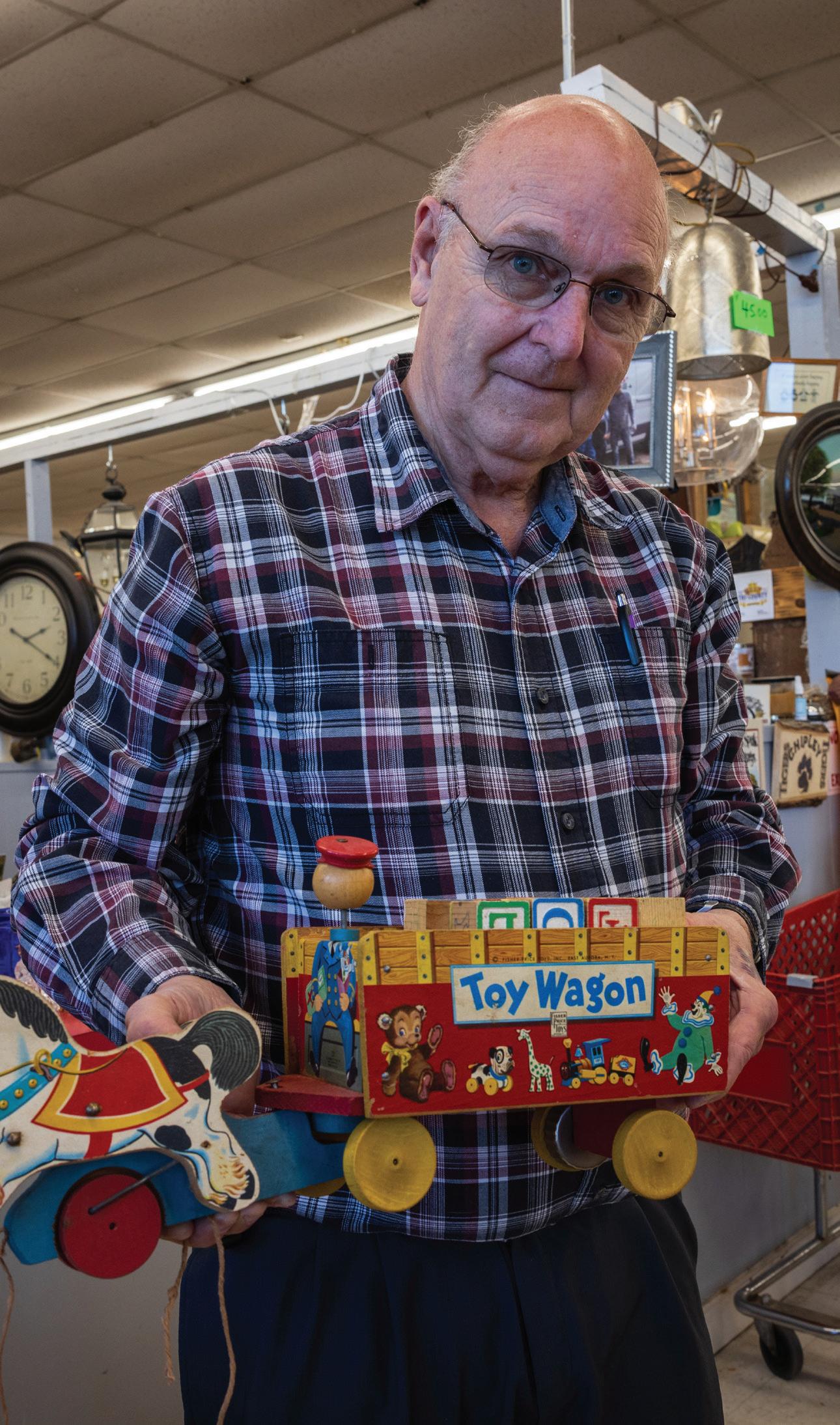









Story and photos by Colette Boehm
Ask around Northwest Florida about learning the ins and outs of yard sales, where and how to find the best treasures and who to go to for pricing and advice, and one name is sure to come up: Bill Tinsley.
Bill owns T&B Hidden Treasures in Chipley, and while he’s been in business there for years, his experience goes far beyond the aisles and booths of his antique mall.
“I’ll be 70 years old in May,” Bill notes with a smile, adding his interest in finding treasures and making sales has grown through the years. “I’ve done yard sales, church sales, rummage sales; I’ve done it all. I’ve got it in my blood.”
Bill started the business for his father-in-law 20 years ago.
“He was trying to make extra money and was setting up a yard sale every weekend,” he says.
At the time, Bill was renting a booth in a Dothan, Alabama, market. He found a building in Chipley and started the new venture. What began as a spot for Bill and his father-in-law to sell their wares grew into a business that supports more than 50 vendors. There are more than 35 others on a waiting list to get a spot at Hidden Treasures, but a vacancy only becomes available every couple of years.
Each vendor has booth space that is their “little store,” Bill says. “I’m going to try to help them. That’s what I do. Every mall has its personality, and owners have their own philosophy. I tell people our mall tries to keep to antique-related items. And to have things for men, women, kids and teens.” That variety, he says, is what keeps people coming back.
Through the years, Bill has researched items he’s interested in and learned what makes other collectibles valuable. From molded plastic Christmas decorations to classic record albums, he knows what can enhance an item’s value and what’s trending. But he says keeping an open mind is the best approach to finding “just that right something” at a sale.
“I will tell you one secret I’ve found,” Bill shares. “Have no preconceived idea of what you’re looking for. If you do, you may
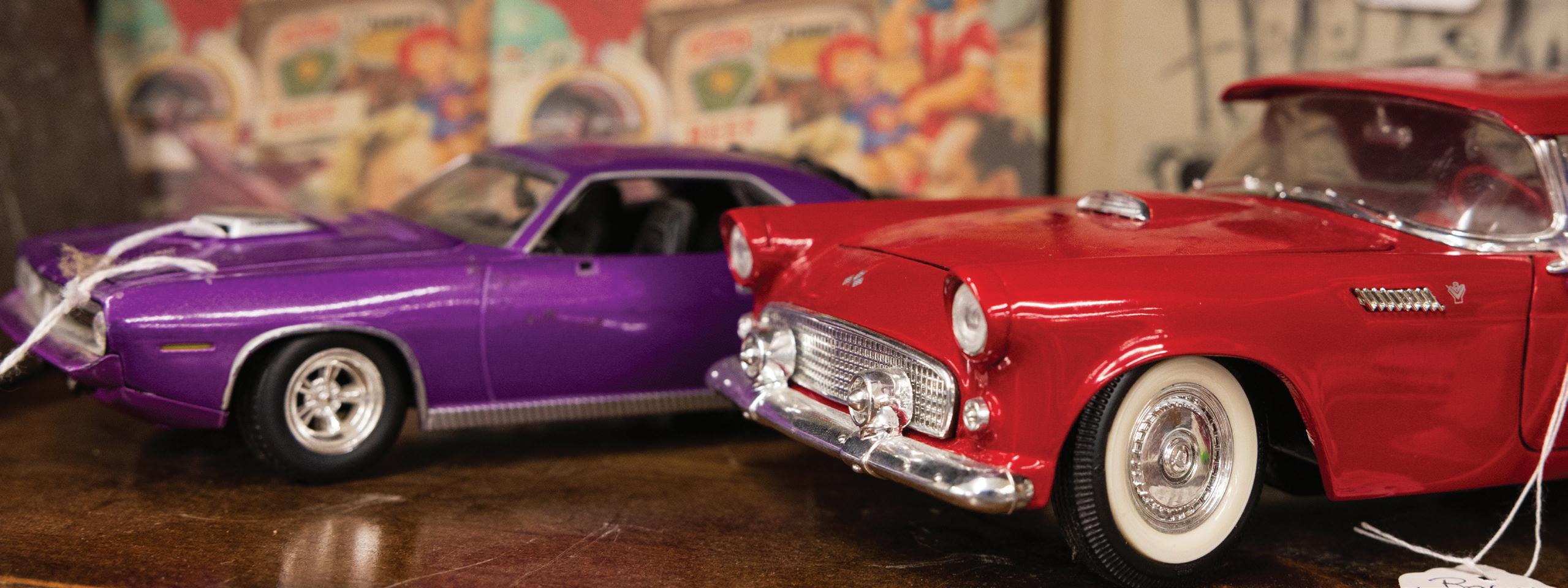
CLOCKWISE FROM ABOVE: During Flea Across Florida, about 350 vendors participate locally. Model classic cars and marble collections are popular items among flea market fans. Bill estimates his store will see about 3,000 shoppers drawn to glassware, toy vehicles and more during the event.
find it, and you may not, but you might pass by something that’s a valuable item. People get blinded by looking for one thing. When you’re able to find one item that you’ve never seen before, that stands out.
“I look for the things other people don’t look for—historical things. That’s what I like. I don’t get out and pick as much as I used to, but I stop at yard sales anytime I can. I have people who are my ‘unofficial pickers,’” he adds. “They’ll call me if they find something I might be interested in.”
Twice a year, Bill hosts the largest concentration of sellers across the entire state. He’s the Washington County coordinator for Florida’s longest yard sale, Flea Across Florida. The event started more than 10 years ago in Live Oak to help boost the economy of small towns along Highway 90. Today, the yard sale stretches 275 miles, from Live Oak westward to Pensacola.
Held the second weekends in April and September, the event has become a favorite for vendors, bargain hunters and many small communities in Northwest Florida. Chipley’s location makes it appealing for shoppers from far away who want to take in as much of the two-day event as possible.
“We’re about halfway across the panhandle,” Bill says, “so people will come and stay here. From here, they can travel one day toward Pensacola and come back, then another day toward Tallahassee.”
Approximately 350 vendors participate locally, with sellers from Alabama, Georgia and other states joining those who come from across Florida. The variety of vendors draws large numbers of customers. Bill estimates 3,000 or more come to shop.
“When you draw 3,000 to 4,000 people, it’s a win-win for everybody,” he says. “Gas stations, restaurants, the community market, they all see the benefits of having the shoppers in town.”
Coordinating the event takes lots of planning. Lining up advertising and booth sales, securing locations and ensuring safety are just a few of Bill’s tasks.
“On March 1, we’ll start taking reservations for spaces,” he says. “We have to think about food, safety, restrooms; it’s a lot of planning.”


The effort is worth it for Bill, who’s happy to see his store, his vendors and the entire community enjoy the benefits.
In addition to being the local coordinator for Flea Across Florida, Bill also finds other ways to support the community. A table is reserved in his store year-round for the local library to sell books, with all proceeds going back to the library. He also recently hosted an antique appraisal event that raised funds for a local charity.























By Drew Woolley

Whitney Savoie can barely remember a time when rodeo wasn’t part of her life. She remembers watching her parents ride in the arena when she was a little girl and jumping at the opportunity to mount up when she was just 6 years old. An all-around competitor, she roped, ran barrels, tied goats and joined in just about every event she could as part of the All Florida Junior Rodeo Association.
Now 38 and president of the AFJRA, Whitney and her husband work a ranch of 2,500 cattle in Moore Haven. She still rides as part of their cow-calf operation, but her kids have taken over in the rodeo arena.
“We’ve worked on the ranch our whole entire lives and been around horses and farming our whole entire lives,” she says. “Rodeo has just been something we did when we were little, and that’s how we’ve brought up our kids.”
The couple’s 11-year-old daughter, Avery, has already won several rodeos at the 10 and under, 15 and under and 19 and under levels. By her already high standards, the
2024 season has been disappointing, mostly because her brother, Rance, 7, has been beating her in the arena.
“Breakaway is my favorite because I get to rope with my cousins and my brother,” Avery says. “We compete a lot.”
Those relationships made junior rodeo a lifelong project for Whitney. Many families have competed for generations, just like hers, and seeing them in the arena alongside her own kids is as much of a thrill as the roping.
“It’s just a big, family-oriented association. Everyone gets along, everyone likes to see each other’s kids win,” Whitney says. “We have friends that I grew up with, and now their kids are coming back. It’s just unreal.”
First Rodeo
Heather Fleckinger comes from one of those rodeo families. She started competing in first grade, taking on every event girls were allowed to do. When her son Slone, 12, started rodeo in kindergarten, it was the perfect opportunity for her to get more involved with the AFJRA.
“Coming from a rodeo family and rodeo myself, we know what kind of help they need,” Heather says. “It takes a village to run a nonprofit like that.”
Heather’s experience also gives her a full understanding of challenges families unfamiliar with rodeo might face when their children take an interest in the sport. Competitors must own their own horses and have a place to board them. Each rodeo lasts a full weekend, and many are not near accommodations, so families often need their own trailers with living quarters. There are also strict dress codes and GPA requirements.
“It’s a fairly expensive sport because, unlike a baseball bat, you have to take care of a horse every day,” Heather says. “It doesn’t matter if you’re not using it that weekend or not.”
Even with those barriers to entry, Heather has noticed more families without a long history in rodeo coming to the sport in the last decade than when she was competing. Her hunch is they’re drawn to the culture around rodeo as much as the sport itself.
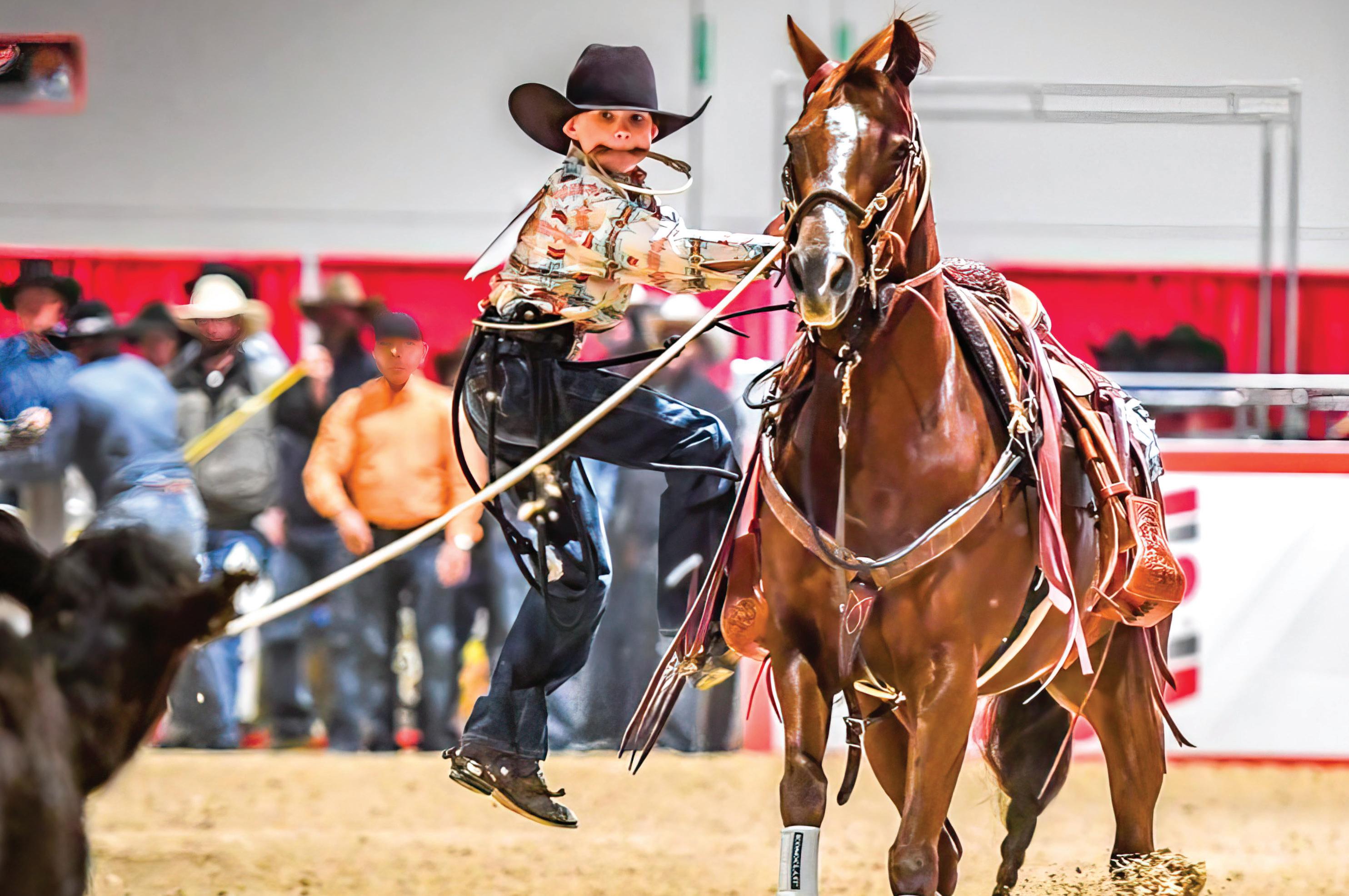

“When you show up to a rodeo or a child goes to dinner, it’s ‘Yes ma’am’ and ‘No ma’am’ most of the time,” she says. “There’s manners, there’s politeness. Just a very different level of how they’re being raised.”
Heather has found junior rodeo in Florida to be a welcoming community, albeit a competitive one. Each year, AFJRA takes a trip to Las Vegas for the national rodeo finals, where the state has been successful.
“Since my child has been there from before kindergarten, I will not be freaking out at the rodeo when I don’t have my eyes on him because everyone kind of looks out for everyone else’s kid,” she says. “Some kids come in that are a little more beginner, and they still have a really great time. So, they don’t really mind getting their booties kicked on the weekend.”

All that work can seem daunting, but for Whitney, there is no question that it is worthwhile. Not only do kids have the chance to learn discipline and earn the satisfaction that comes with a winning performance, but they also pick up skills that serve them well outside the arena.
“It keeps them busy and doing things that are active, not just sitting around playing on a phone or an iPad,” she says. “It gets them out in public. They get to do interviews when they win in Vegas or Texas at one of those big ropings. They get to meet people. Later in life, it’s going to help them when they go to school or if they need anything.”
It can also be a path to a college scholarship for those at the front of the pack. While competitors must move on from the AFJRA after eighth grade, they
can continue in the Florida High School Rodeo Association. Several Florida students have gone on to earn full-ride rodeo scholarships in recent years at schools such as Carlton State, Texas A&M, Sam Houston State and McNeese State, where Whitney herself went on a rodeo scholarship.
While Heather still rides and would love to compete, she has her hands full keeping up with AFJRA and her son’s rodeo aspirations. Caring for his six horses, practicing with him daily and traveling to another rodeo almost every weekend leaves time for little else. For her, it’s all part of the rodeo lifestyle.
“For us, it’s not a hobby; it’s a way of life,” Heather says. “It’s a very different way of life and a very demanding one. There’s just nothing else like it in Florida, and that’s why it’s been around for so long.”
If you’re new to rodeo, here’s what to expect from the AFJRA season: August-April: The association holds a rodeo on the third weekend of every month except December. Each is a weekend-long event, with competitions on Friday and Saturday nights and a banquet on Sunday.
Athletes accumulate points from events at each of these rodeos, from 10 points for first place in an event to one point for 10th place.
May: The 15 athletes with the most points go to the state finals the third weekend of May. The competition is two days, just like the regular season.
Not sure what to make of events such as chute dogging, pole bending or breakaway? These are some of the most common events spectators and athletes might encounter at junior rodeo competitions:
Cutting—A horse and rider work to isolate a single cow within a designated area. Riders are judged on horsemanship, ability to anticipate the cow’s movement, reflexes and agility.
Bull riding—Riders fight to stay on their bull for as long as possible. They are judged on body position, use of their free arm and the animal’s efforts.
Tie down—Also known as calf roping, riders chase a calf and rope it around the neck. Once the calf is caught, the rider dismounts and runs to tie the calf by three legs as quickly as possible.
Barrel racing—A horse and rider attempt to run a cloverleaf pattern around a set of barrels in the fastest time. Time may be added if the rider touches or moves any barrels.
Breakaway roping—This event is a variation of calf roping where the calf is roped but not tied. The calf is given a head start before the rider attempts to lasso the calf with a rope tied to the saddle with a string. Once they’ve roped the calf, the rider stops and the string breaks.
Chute dogging—A competitor leads a steer 10 feet out of a chute into the arena and must wrestle, or “dog,” the steer to the ground in 60 seconds. They cannot trip the steer; a legal fall requires all four feet and the steer’s head to face the same direction.
Goat tying—Competitors leave a chute on horseback and race toward a goat staked on a 10-foot-long rope in the arena. They dismount while the horse is in motion, drop the goat on its side and tie three of its feet as quickly as possible.
Team roping—Two riders attempt to rope a steer together in the fastest time. The first, known as the “header,” ropes the steer around the horns or neck, and then the “heeler” ropes the steer by its hind legs. A time penalty is added if the heeler only catches the steer by one leg.

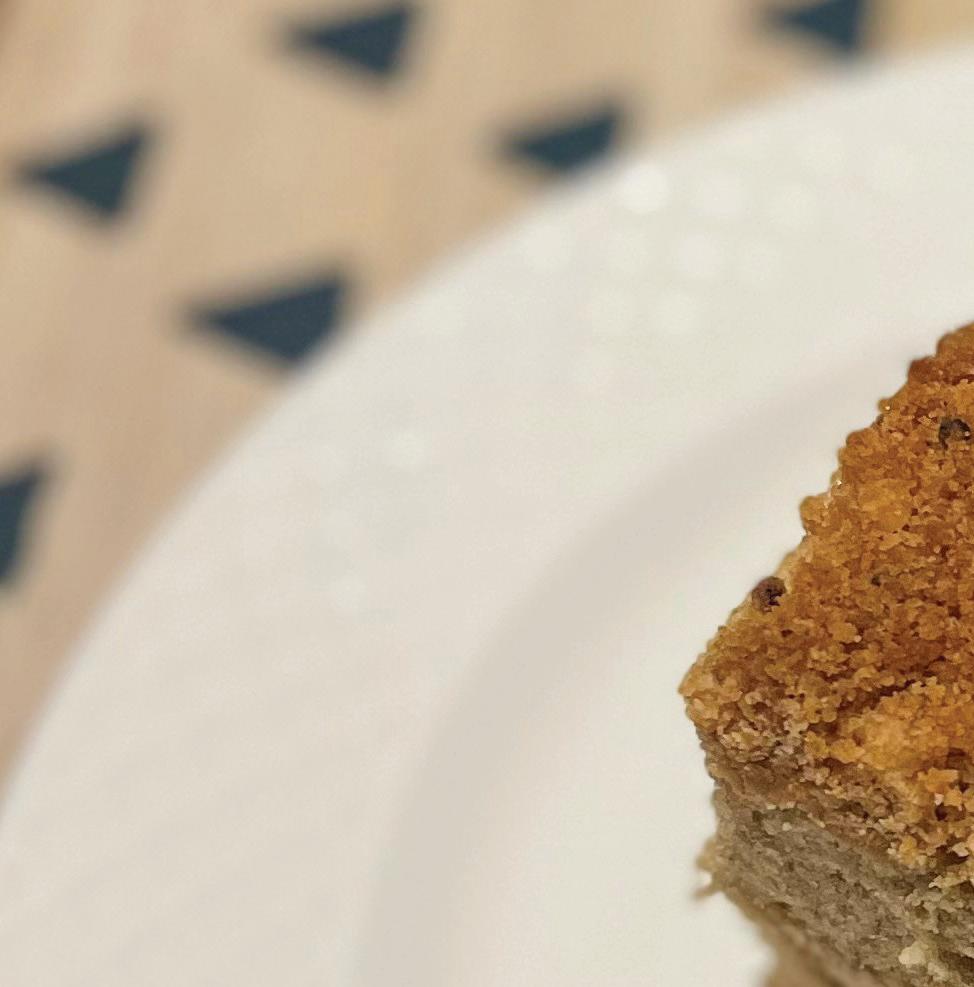








Coffee Coffee Cake
Crumb topping
½ cup all-purpose flour
¼ cup brown sugar
½ teaspoon ground cinnamon
½ teaspoon instant coffee powder
4 tablespoons butter, melted
Heat oven to 350 F.
Spray a 9-by-9-inch pan, and line with parchment. Spray the parchment as well.
For the crumb topping: In a medium bowl, mix the flour, brown sugar, cinnamon, coffee powder and salt. Add the melted butter. Mix until it forms crumbs that you can clump together in your hand.


For the cake: In a medium bowl, whisk together the flour, baking powder, baking

Cake
1¾ cups cake flour
¾ teaspoon baking powder
¾ teaspoon baking soda
½ teaspoon ground cinnamon
½ teaspoon salt
soda, cinnamon and salt. In a smaller bowl, whisk together the coffee and sour cream until smooth.
In the bowl of an electric mixer fitted with the paddle attachment, beat the butter and sugar together until light and fluffy. Add the eggs, one at a time, mixing until each is well-combined. Add the vanilla. Beat until the mixture is light and fluffy. Starting and ending with the dry

½ cup strong-brewed coffee
1⁄3 cup sour cream

1 cup butter, room temperature
1 cup granulated sugar
2 extra-large eggs

1 teaspoon vanilla extract
ingredients, alternate adding the flour mixture and the coffee mixture to the stand mixer. Mix well after each addition. Pour the batter into the prepared baking pan. Top with crumb topping, spreading it evenly. Bake for 45 minutes or until a toothpick comes out clean.
Remove the cake from the oven. Cool for 20 to 30 minutes before cutting and serving.



1 pound ground sausage
2 tablespoons flour
1 cup milk
1 cup water
¼ cup brewed coffee
Salt and pepper, to taste
Brown sausage in a cast-iron skillet. Add flour, and brown. Add milk and water. Simmer for desired thickness. Stir coffee into the mixture. If it’s too thick, add more milk. Season with salt and pepper. Serve over your favorite biscuits.
4 slices bacon, chopped
1 sweet onion, chopped
¼ cup vinegar-based barbecue sauce
Heat the oven to 350 F.
28-ounce can baked beans
¼ cup brown sugar
2 tablespoons Dijon mustard
¼ cup brewed coffee
Cook the chopped bacon in a pot over medium heat until browned, about 10 minutes. Remove the bacon with a slotted spoon, reserving the bacon grease in the pan. Drain the bacon on paper towels.
Add the chopped onion to the pot with the bacon grease. Cook for 15 minutes over medium-low heat or until caramelized. Remove the pot from the heat. Add the bacon back to the pot, as well as the remaining ingredients. Mix.
Pour the beans into a greased 8-by-8-inch baking dish. Bake for 2 hours. Let sit for 5 minutes before serving.
Cupcakes
1 cup sugar
½ cup brewed coffee, cold
½ cup canola oil
2 extra-large eggs, room temperature
3 teaspoons cider vinegar
Frosting
3 tablespoons milk chocolate chips
3 tablespoons semisweet chocolate chips
Heat oven to 350 F.
3 teaspoons vanilla extract
1½ cups all-purpose flour
1⁄3 cup baking cocoa
1 teaspoon baking soda
¾ teaspoon salt
1⁄3 cup butter, softened
2 cups confectioners’ sugar
2 tablespoons brewed coffee
½ cup chocolate sprinkles
In a large bowl, beat sugar, coffee, oil, eggs, vinegar and vanilla until well-blended. In a small bowl, combine flour, cocoa, baking soda and salt. Gradually beat into coffee mixture until blended.
Fill 12 paper-lined muffin cups three-fourths full. Bake for 20 to 25 minutes or until a toothpick inserted in center comes out clean. Cool for 10 minutes before moving to a wire rack to cool completely.
To make frosting: In a large bowl, melt chips and butter in a microwave. Stir until smooth. Gradually beat in confectioners’ sugar and enough coffee to reach desired consistency. Pipe frosting onto cupcakes, and add sprinkles.
2 tablespoons coarse salt
2 tablespoons instant coffee
2 tablespoons garlic powder
2 tablespoons smoked paprika
1 tablespoon black pepper
1 tablespoon crushed coriander
1 tablespoon onion powder
1 teaspoon chili powder
½ teaspoon cayenne, more or less to taste
Add all ingredients to a medium-sized bowl. Mix well. Once mixed, it can be used immediately. Store leftovers in an airtight glass container.
S’mores
1 cup whole milk
3 extra-large eggs, room temperature
2⁄3 cup sugar
1⁄3 cup baking cocoa
2 tablespoons strong-brewed coffee
2 tablespoons butter, melted
Heat oven to 325 F.
2⁄3 cup graham cracker crumbs
1⁄3 cup sugar
2 cups miniature marshmallows
1.55-ounce milk chocolate candy bar, broken into 12 pieces
In a small saucepan, heat milk until bubbles form around sides of pan. Remove from heat. In a large bowl, whisk eggs, sugar, cocoa and coffee until blended but not foamy. Slowly whisk in hot milk.
Place six 4-ounce broiler-safe ramekins in a baking pan large enough to hold them without touching. Pour egg mixture into ramekins. Place pan on oven rack. Add hot water to pan to within ½ inch of the top of the ramekins. Bake 20 to 25 minutes or until a knife inserted in the center comes out clean. Centers will still be soft. Remove ramekins from water bath immediately to a wire rack. Cool for 10 minutes. Refrigerate until cold.
In a small bowl, mix butter and cracker crumbs. Set aside. To caramelize topping with a kitchen torch, sprinkle custards evenly with sugar. Hold torch flame about 2 inches above custard surface. Rotate it slowly until sugar is evenly caramelized. Sprinkle custards with crumb mixture, and top with marshmallows. Using the torch, heat marshmallows until browned. Top with chocolate pieces. Serve immediately or refrigerate for up to 1 hour.
To caramelize topping in a broiler, place ramekins on a baking sheet. Let stand at room temperature for 15 minutes. Heat broiler. Sprinkle custards evenly with sugar. Broil 3 to 4 inches from heat for 3 to 5 minutes or until sugar is caramelized. Sprinkle custards with crumb mixture. Top with marshmallows. Broil for 30 to 45 seconds or until marshmallows are browned. Top with chocolate pieces. Serve immediately or refrigerate for up to 1 hour.

By Dave LaBelle
Some people are fascinated with architecture or angels; I love trees.
A grand lone oak tree stands—as if on watch—at the side of a road not many miles from where I live. Each time passing it, I wondered its age and who planted it there. Finally, my curiosity got the best of me, and I had to know more.
I learned the man who planted it is gone. So are his

children and his children’s children, but the old oak tree John Vorwald placed in the earth in 1895, as a marker for the northeast corner of the town that would become New Vienna, Iowa, still stands 128 years later. His great-grandson Kevin Vorwald still lives on the family property.
Kevin’s great-grandfather was the first mayor of the town when he planted the tree. Though New Vienna was founded in 1843, it wasn’t incorporated until some 50 years later, long after Iowa became a state in 1846. Kevin says his great-great-grandfather married a girl whose father bought the land from the government when James Polk was president. Polk’s name is on the deed.
Trees are living, breathing
gifts, and may possess greater memory and intelligence than we imagine. Research has revealed that like people, trees can have elaborate, far-reaching root systems that allow them to talk to each other.
Just like us humans, trees are connected and often members of large families.
I am reminded of the late Shel Silverstein’s powerful book, “The Giving Tree,” about the relationship between a boy and an apple tree. Every tree is a giving tree. Just as I imagine how lacking a world without birds would be, I think how sad our walk on Earth would be without trees. I have often said that next to a good mother, God’s greatest creation is a tree.
Had I not chosen photojournalism, I might have become an arborist. n
Your challenge is to choose a tree that speaks to you—one that you admire and maybe even feel a connection to. Research its species and origin. Was it indigenous or a species brought to your area, transplanted from another state or even another country? Does the tree have a story? And then set out to make a photograph that captures how you feel about the tree. Consider the angle, composition, light and lens, even the time of day or night that best reveals how you see this magnificent creation.
Email your best image (just one, please) with caption information, including an explanation of how it affects you, to GPH@pur.coop. We may share submissions on our website and social media channels.












GUARANTEED TO GROW Or We’ll Replace Plugs FREE!


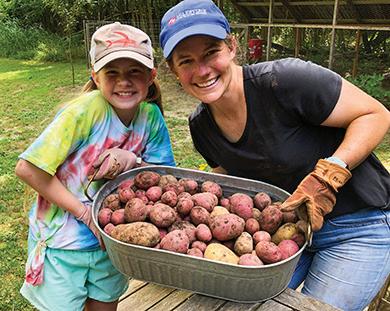







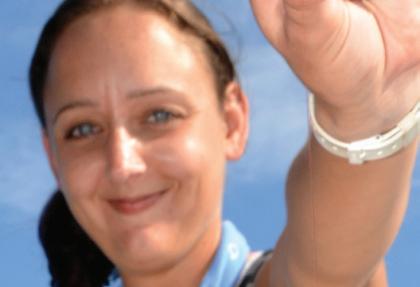



Sometimes overlooked as anglers pursue other fish, small sunfish provide incredible sport on light tackle. Even renowned professionals most likely started fishing for bluegills or other sunfish.
Many people can’t tell the various sunfish species apart, so they simply call them all “bream” or “perch” in addition to a dozen other names.
Among the most common, widespread and aggressive sunfish, bluegills derive their name from the navy blue “ear flaps” on their gill plates. These fish live in nearly every freshwater system in Florida.
Redear sunfish look like pale bluegills, but with a little scarlet trimming on their ear flaps. Also called shellcrackers because they love to crush snails with grinders in their throats, redears range throughout Florida and can inhabit tidal marshes. They grow larger than bluegills and frequently weigh more than a pound.
A warmouth looks similar to a bluegill in color, but with a larger mouth. Also called goggle-eyes, these thick, dark fish love swamps, shallow weedy lakes, sluggish streams, and canals with thick vegetation and muddy bottoms.
With their large mouths, warmouth sometimes attack bass lures. They can weigh more than 2 pounds, but few exceed 1 pound.
As water temperatures warm in the spring, bream start spawning. They dig out beds in shallow flats. In clear water, people can easily spot these dark depressions on the bottom. Bluegills might spawn several times into the fall and regularly return to the same bedding areas every year.
Many anglers dangle worms or crickets under floats to catch sunfish. They may toss a float over a bed or next to cover and wait for it to twitch or go under the water. Feisty sunfish also eat minnows, small crawfish, bread and anything else they can swallow, but most of all, they love insects.
Because bream feed so heavily on insects, some anglers tempt them with fly tackle. Small floating cork, insect imitations and foam or plastic poppers make great enticements for bluegills. Anglers can also use traditional dry or sinking flies and streamers that mimic minnows.
Pound for pound—or more appropriately, ounce for ounce— bream can outfight anything in fresh water. What they lack in size, they more than compensate for in determination and pugnacious attitude. Bluegills defend their beds from anything










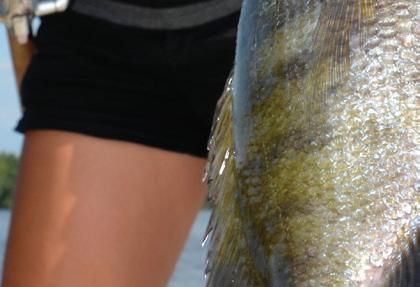








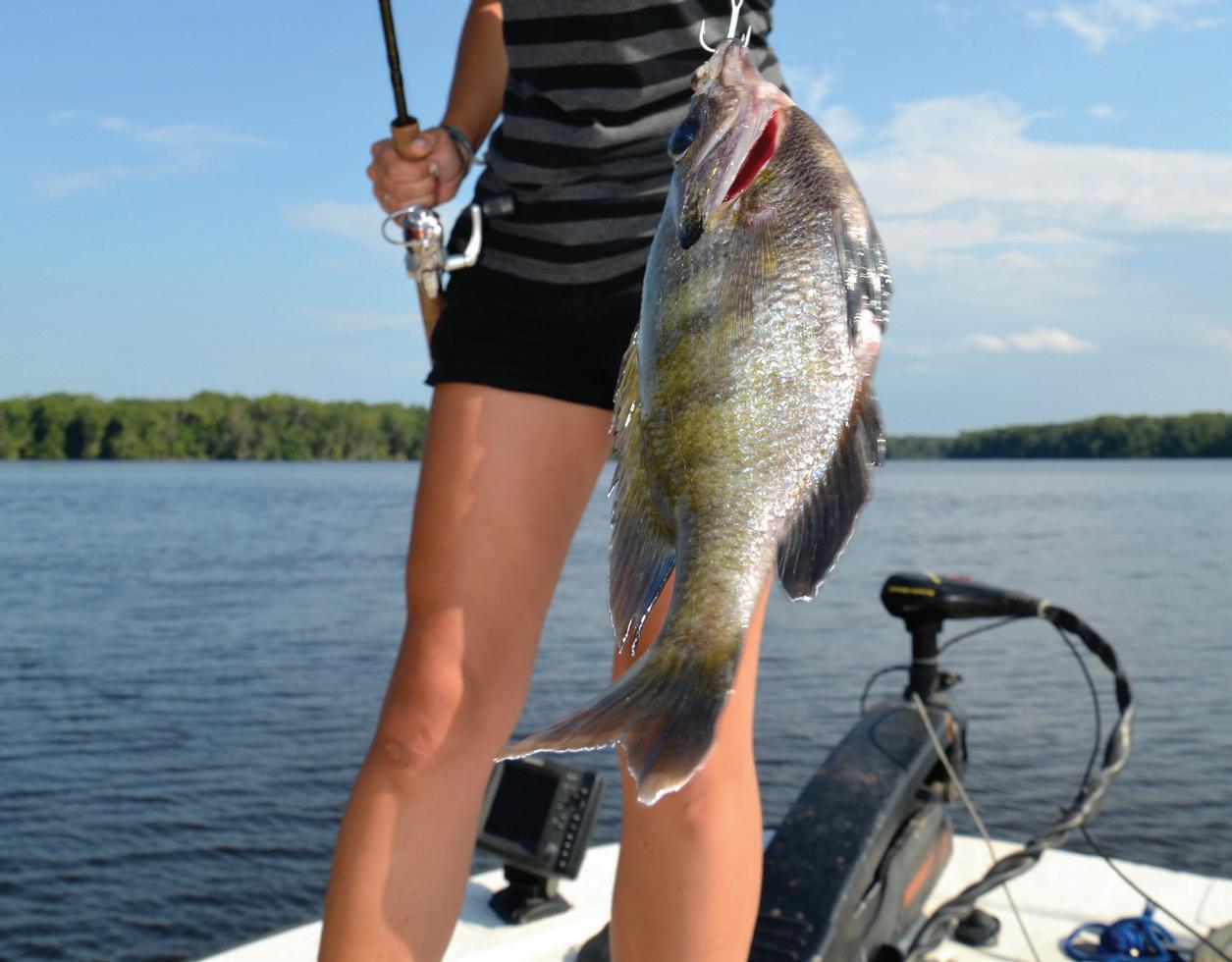
that enters their domain.
Tossing a small floating bug over a bream bed or near other cover, and let it rest on the surface a few moments. Then give it a slight twitch or pop. The small but aggressive fish commonly explode on floating lures with strikes.
Another bream temptation: Beetle spinners use jigheads with spinning metal blades that create flash and vibrations in the water. On the hook, thread a soft-plastic trailer, toss the lure to a likely spot and slowly retrieve it so the blades spin.
Anglers might find big action in small packages by tempting these diminutive scrappers. Sunfish live in practically every freshwater system in Florida, from the smallest ponds to the largest lakes and rivers.

John N. Felsher is a freelance writer, broadcaster, photographer and editor. An avid sportsman, he’s written more than 3,500 articles for more than 170 different magazines on a wide variety of outdoor topics. He also hosts an outdoor tips show for WAVH-FM Talk 106.5 in Mobile, Alabama. Contact him at j.felsher@hotmail.com or through Facebook.


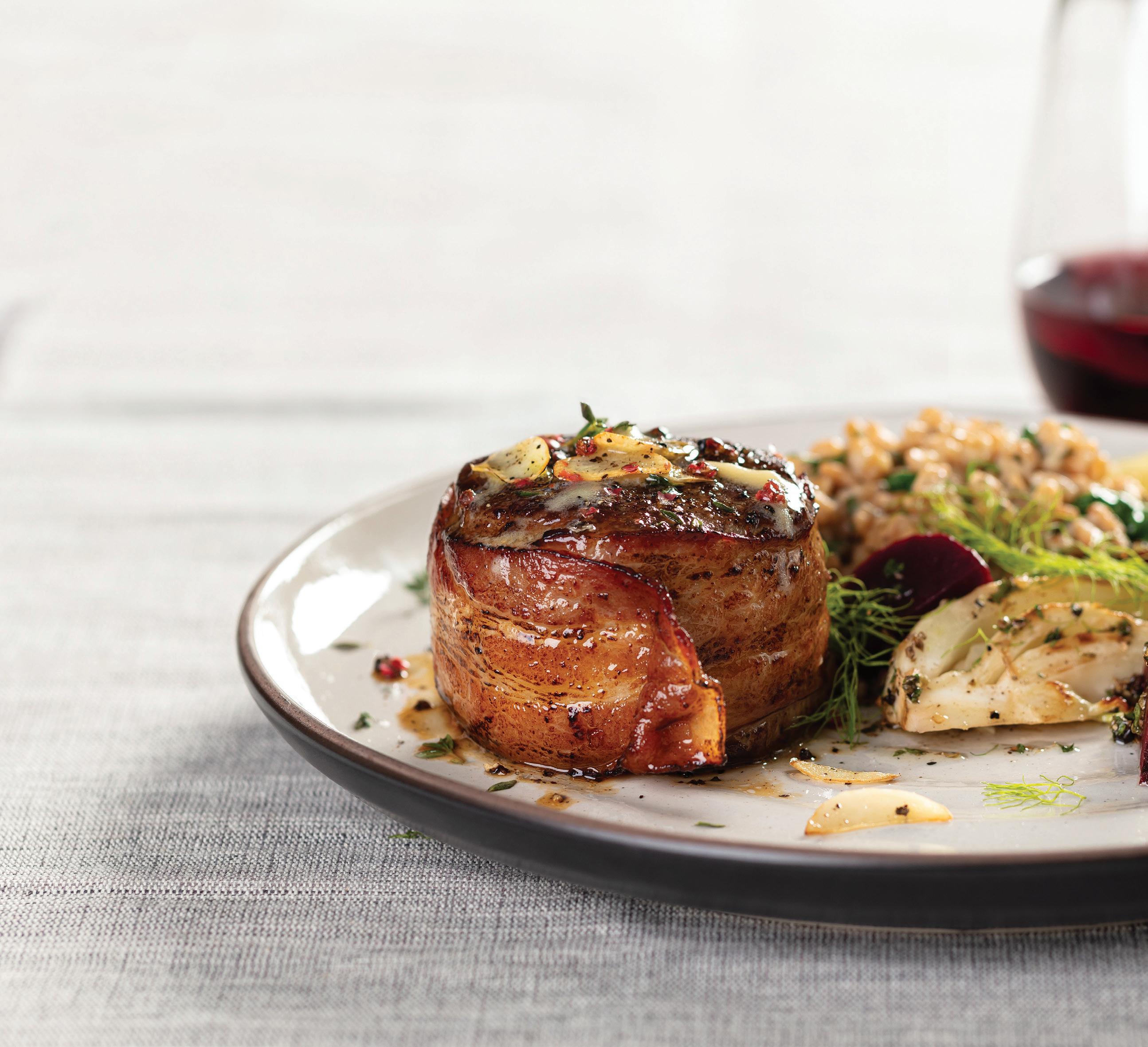

























March 1
Tennessee Williams Festival Curator Dennis Beaver gives a tour of the Tennessee Williams Museum, featuring a detailed look into the filming of “The Rose Tattoo.” During the tour that starts at 11:30 a.m., participants will learn about objects in the museum and how they related to Tennessee Williams, his Tony Award-winning play and the filming for the movie. Reservations are available online and are required for the tour. www.kwahs.org; 305-295-6616



March 2
Garden Club House and Garden Tour
Marathon Garden Club hosts its annual House and Garden Tour from 10 a.m. to 4 p.m. The tour features four luxury oceanfront homes on Key Colony Beach and Stirrup Key. Visitors can also tour the gardens at the clubhouse, including the new orchid wall. Tickets are $35 and sold from 10 a.m. to 2 p.m. Monday through Friday at Marathon Garden Club, 5270 Overseas Highway, MM50, Gulf; at the Marathon Chamber of Commerce; the DK Beach Boutique on Key Colony Beach or at www.eventbrite.com. www.marathongardenclub.org; 305-743-4971


March 2
Ocean Strike Team Shark School
Dive into the depths of marine marvels during a one-day workshop dedicated to unraveling the mysteries of sharks. From exploring their biology to understanding their crucial role in the ocean’s ecosystem, Shark School promises an immersive experience. You will learn about shark behavior and gain insights from a team of esteemed shark experts. Admission is $30 and includes lunch. The workshop is 9 a.m. to 5 p.m. oceanstriketeam.org; 469-387-4940

March 5
Death by Chocolate





All ages can find something new and exciting around every corner of the state. Filled with rich history, abundant natural beauty and diverse events all year, Florida has something fun for everyone.
Join the Emerald Coast Business Women from 5 to 8 p.m. CST at the Boardwalk Beach Hotel and Convention Center for this 23rd annual event. This year’s theme is “Chocolate Illusion, a Magical Evening.” The benefit features an array of desserts from local restaurants, caterers and culinary programs, as well as a silent auction. The revenue funds scholarships for Bay County women ages 23 and older. Tickets are available online or at the door.

emeraldcoastbwa.clubexpress.com; 850-685-1183


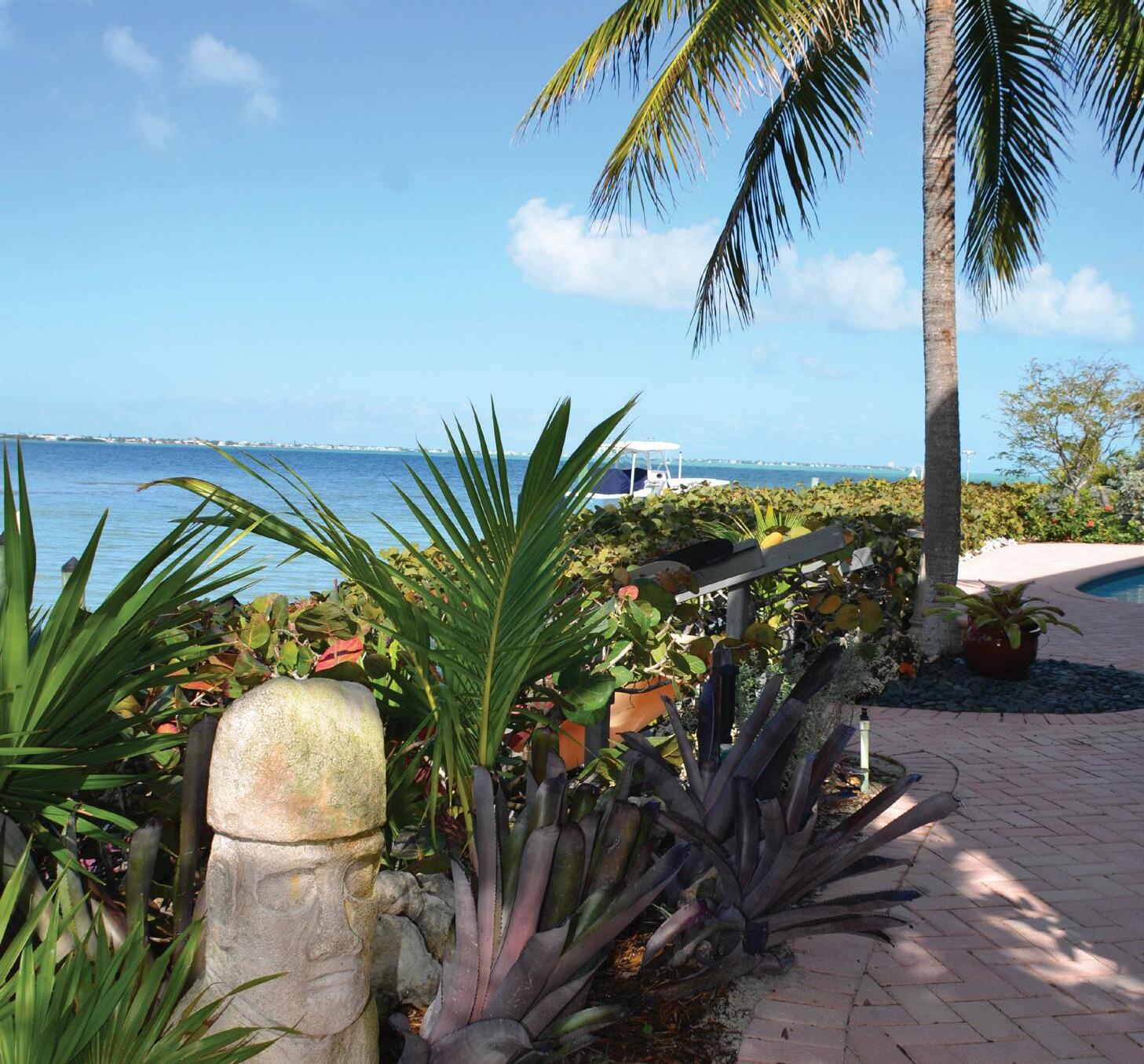












March 4-23
Wildlife of the Keys Art Show
Art Guild of the Purple Isles presents a show featuring original artwork of feathered, furry and scaly wildlife found in the Keys at Our Place in Paradise Gallery, 88.7 Overseas Highway. The show is 10 a.m. to 5 p.m. Monday through Friday. Admission is free. www.agpi.us; 305-394-1082

March 9


March 16
Spring Fling
The Crafty Cats at First United Methodist Church invite you to its event from 9 a.m. to 3 p.m. This event features plants, yard ornaments, garden décor, decorated pots, seasonal crafts and baked goods. There is also a garden party. fumclw.org; 863-676-2516
March 17






San Pedro Church Huge Annual Yard Sale
New, gently used and vintage items are featured at the San Pedro Women’s Guild event from 8 a.m. to 2 p.m. at San Pedro Church, MM 89.5. Come early and take advantage of the bargains. www.sanpedroparish.org; 305-852-5372
March 15
Annual Quilt Show


The St. Andrew Bay Quilters look forward to sharing their work-intensive projects from 9 a.m. to 4 p.m. at Central Panhandle Fairgrounds. This annual quilt show highlights the St. Andrew Bay Quilters Guild members’ skills, teamwork and passion. Join us for an exciting two days full of fun and creativity. www.sabqg.org
March 15-17
3rd Annual Kites on the Coast
This is an intergenerational event at the Casino Beach pavilion. It boasts two professional kite teams, a large children’s craft area, local schoolaged performers and food trucks. Admission is free, but make sure to reserve your ticket online. kitesonthecoast.org; 850-266-2513
Upper Key’s Irish Fest
Filled with live music, a parade, corned beef and cabbage and Irish dancers, this fundraiser benefits T.I.P.S. and their work with Key Largo School Athletics and Upper Key Kids. There will also be a kid zone, raffles and a silent auction. caribbeanclubkl.com; 305-451-4466
March 23
20th Annual Pioneer Day and BBQ


March 23-24
Ladies, Let’s Go Fishing


This event showcases the history of southwest Florida from 9 a.m. to 3 p.m. This year’s festival commemorates the centennial anniversary of Arcadia Tourist Camp and the Tin Can Tourists’ annual convention. There is fun for the whole family, including barbecue, strawberry shortcake, musical entertainment, authors and artists. historicdesoto.org; 863-266-5774

Returning for its saltwater inshore fishing seminar at Bass Pro Shops Fort Myers, this event offers classroom instruction, hands-on fishing activities, conservation, networking and optional guided boat fishing. No equipment or experience is required. www.ladiesletsgofishing.com; 954-475-9068





Want to share a family-friendly event with the readers of Florida Currents? Enter the details at tinyurl.com/FloridaCurrents. Make sure to submit the item at least 60 days before the event (due to press deadline). If you own rights to a print-quality photo promoting your event, include it with photo credit information.








Notice
Thesun rises and sets at peak travel periods, during the early morning and afternoon rush hours and many drivers find themselves temporarily blinded while driving directly into the glare of the sun. Deadly accidents are regularly caused by such blinding glare with danger arising from reflected light off another vehicle, the pavement, or even from waxed and oily windshields that can make matters worse. Early morning dew can exacerbate this situation. Yet, motorists struggle on despite being blinded by the sun’s glare that can cause countless accidents every year.

Drivers’ Alert: Driving can expose you to more dangerous glare than any sunny day at the beach can…do you know how to protect yourself? Navigator™ Gold Stainless Steel Sunglasses Receive the Navigator™ Gold Sunglasses (a $59.95 value) FREE! just for trying the Navigator™ Black
Not all sunglasses are created equal. Protecting your eyes is serious business. With all the fancy fashion frames out there it can be easy to overlook what really matters––the lenses. So we did our research and looked to the very best in optic innovation and technology.
Sometimes it does take a rocket scientist.
A NASA rocket scientist. Some ordinary sunglasses can obscure your vision by exposing your eyes to harmful UV rays, blue light, and reflective glare. They can also darken useful vision-enhancing light. But now, independent research conducted by scientists from NASA’s Jet Propulsion Laboratory has brought forth ground-breaking technology to help protect human eyesight from the harmful effects of solar radiation light. This superior

lens technology was first discovered when NASA scientists looked to nature for a means to superior eye protection—specifically, by studying the eyes of eagles, known for their extreme visual acuity. This discovery resulted in what is now known as Eagle Eyes
The Only Sunglass Technology Certified by the Space Foundation for UV and Blue-Light Eye Protection. Eagle Eyes® features the most advanced eye protection technology ever created. The TriLenium® Lens Technology offers triple-filter polarization to block 99.9% UVA and UVB—plus the added benefit of blue-light eye protection. Eagle Eyes® is the only optic technology that has earned official recognition from the Space Certification Program for this remarkable technology. Now, that’s proven science-based protection.


The finest optics: And buy one, get one FREE! Eagle Eyes® has the highest customer satisfaction of any item in our 20 year history. We are so excited for you to try the Eagle Eyes® breakthrough technology that we will give you a second pair of Eagle Eyes® Navigator™ Sunglasses FREE––a $59.95 value!
That’s two pairs to protect your eyes with the best technology available for less than the price of one pair of traditional sunglasses. You get a pair of Navigators with stainless steel black frames and the other with stainless steel gold, plus one hard zipper case and one micro-fiber drawstring cleaning pouch are included. Keep one pair in your pocket and one in your car.
Your satisfaction is 100% guaranteed. If you are not astounded with the Eagle Eyes® technology, enjoying clearer, sharper and more glare-free vision, simply return one pair within 30 days for a full refund of the purchase price. The other pair is yours to keep. No one else has such confidence in their optic technology. Don’t leave your eyes in the hands of fashion designers, entrust them to the best scientific minds on earth. Wear your Eagle Eyes® Navigators with absolute confidence, knowing your eyes are protected with technology that was born in space for the human race.
Navigator™ Black Stainless Steel Sunglasses


Space Foundation Technology Hall of Fame.


Spring is a wonderful season, but it can bring powerful storms. Read the clues below, then use the word bank to complete the storm safety tips.
1. Keep a handy in case of a power outage.
2. Be watchful for signs of a thunderstorm, including dark skies, flashes of or strong winds.
3. If a is issued, seek shelter in a centrally-located room in your home, a basement or storm cellar.
4. If you’re outside and hear , go indoors immediately.
5. Practice a tornado with your family once a year.
WORD BANK
thunder
drill
flashlight
tornado warning
lightning
By Miranda Boutelle
Q: What energy-saving tasks I can add to my spring-cleaning list?
A: Spring is a great time to refresh, clean and enhance energy efficiency at home. By adopting simple yet effective energy-saving strategies during our springcleaning routines, we can create an efficient living environment that may also lower our utility bills and extend the life of our heavily used appliances.
Be sure to include these springcleaning tips to add some energy savings to the job.
Check the filter in your air central conditioning system. Even though it’s out of sight, don’t leave it out of mind.
Your air conditioner works hard. Ensuring your system has a clean filter is a low-cost and easy way to protect your equipment and maximize efficiency. A dirty filter can cause your system to work harder than necessary, decreasing efficiency and shortening the system’s life.
Have your air conditioning system serviced and professionally cleaned. Both indoor and outdoor units should be cleaned. Dirty refrigerant coils reduce efficiency. A technician can check refrigerant levels and refill or make repairs if necessary.
Schedule system service in the spring. HVAC contractors get busy responding to calls during the summer heat. Scheduling cleaning services for your air conditioning in the spring can ensure the work gets done before the rush and even save you money.
Some HVAC contractors offer special discounts for cleaning services in the milder months, which helps fill their schedules and keep their technicians working.
Clean window AC units. Window AC units can get dirty, too. They can be cleaned with the proper tools, cleaning agents and know-how. Always unplug the unit before cleaning it, and wait until it is completely dry to plug it back in again.

Clean light fixtures and fixture covers. Cleaning can brighten your space by removing dust and grime collected during the winter. While you are at it, check your bulbs and replace any incandescent or compact fluorescent lights with energysaving LEDs. Although they tend to cost a little more, LEDs last longer and use less energy.
Buy good LEDs. Good-quality LEDs are expected to last 30,000 to 50,000 hours, according to the Department of Energy. A typical incandescent lamp lasts about 1,000 hours, and a comparable CFL lasts 8,000 to 10,000 hours. To put this into everyday use, if you have an LED light on for 10 hours a day, it can last 13 years compared to only about three months for incandescent bulbs and about two-and-ahalf years for CFLs.
Don’t forget the oven. A clean oven heats more evenly and quickly, providing better results and lower energy use. A clean oven window allows you to see the food and how it’s cooking without opening the oven door, which wastes energy.
Clean and seal windows. If cleaning windows is on the list, check the seals and sash locks to ensure they close tightly. Check for any areas that need caulking or sealing to reduce drafts. Sealing around windows contributes to year-round comfort in your home. Clean windows also allow more light into the home,
ABOVE: While cleaning light fixtures and fixture covers, check your bulbs and replace any incandescent or compact fluorescent lights with energysaving LEDs. RIGHT: Replacing the central air conditioning filter is a low-cost and easy way to protect your equipment and maximize efficiency.
PHOTOS BY MARK GILLILAND

reducing the need to turn on lamps and overhead fixtures.
Spring is the ideal time to declutter, deep clean and implement practices that not only tidy our homes but also reduce energy consumption, contributing positively to our homes’ energy efficiency and saving money on energy use. n
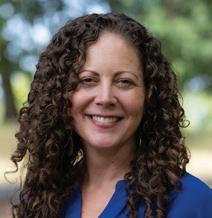
Miranda Boutelle has more than 20 years of experience helping people save energy. She has worked on energyefficiency projects from the Midwest to the West Coast.
Today, Miranda is chief operating officer at Efficiency Services Group in Oregon, a cooperatively owned energy-efficiency company.
This content was originally created by Efficiency Services Group LLC under contract with NRECA. NRECA retains ownership of this content. NRECA does not endorse Efficiency Services Group, its views herein expressed, nor any products or services it offers.
Thanks to the Journey Adventure, there’s a practical, safe and affordable way for millions of Americans to stay on the move
Age has its privileges, but getting around easily isn’t necessarily one of them. For years, I’ve had a variety of health issues that have made it hard for me to get around the house, much less go out to my book groups or the mall. I thought I’d have to give up doing some of the things I loved, until a friend told me about the Journey Adventure.
For years, Journey has been a trusted name in mobility. The leaders of this innovative company tasked their engineers with a challenge: create a scooter that is safe, portable and easy-to-use.
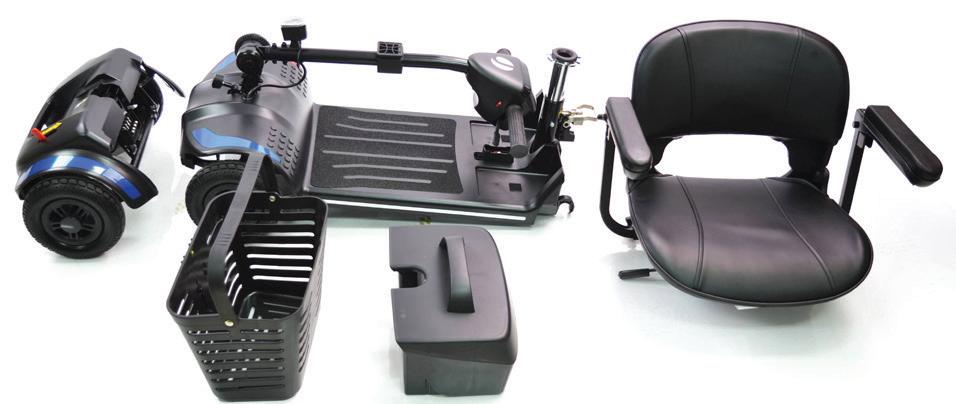

• Heaviest section (33lbs) assembles and disassembles in seconds
• Variable speed settings
• Headlight, basket and horn are all included
• Nothing is as easy and simple as the Adventure

Heaviest part is only 33 lbs!
The result is the Adventure. It provides maximum comfort, with plenty of leg room and a design that enables proper posture, and 4-wheel configuration provides stability on a variety of surfaces. The exclusive “take apart” style provides tool free assembly and disassembly in secondswith the heaviest piece weighing just 33 pounds. No need for a trailer or lift on your car, this amazing scooter can go right in the trunk or backseat.
• Goes 15 miles on a single charge
• Comfortable, full swivel, height-adjustable seat
• Width adjustable and retractable padded armrests
• Handy removable basket with handle
• Rear reflectors and antitippers
• Adjustable width arms to allow all who weigh under 300 lbs to be comfortable
• Safe for travel on Airpalnes and Cruise Ships
Call now and find out just how comfortable, safe and affordable it can be. Knowledgeable product experts are standing by to talk with you and answer any questions.

By Maura Giles
Electricity plays an essential role in everyday life.
It powers our homes, offices, hospitals and schools. We depend on it to keep us cool, charge our phones and binge our favorite TV shows. If the power goes out, even briefly, our lives can be disrupted.
The system that delivers your electricity is often described as the most complex machine in the world, and it’s known as the electric grid.
What makes it so complex? We all use different amounts of electricity throughout the day, so the supply and demand for electricity constantly changes. For example, we typically use more electricity in the mornings when we start our days, and in the evenings when we cook dinner and use appliances. Severe weather and other factors also impact how much electricity we need.
The challenge for electric providers is to plan for, produce and purchase enough electricity so it’s available exactly when we need it. Too much or too little electricity in one place can cause problems. To make sure the whole system stays balanced, the electric grid must adjust in real time to changes and unforeseen events.
At its core, the electric grid is a network of power lines, transformers, substations and other infrastructure that spans the country. But it’s not just a singular system. It’s divided into three major interconnected grids: the Eastern Interconnection, the Western Interconnection and the Electric Reliability Council of Texas. These grids operate independently but are linked to allow electricity to be transferred between regions when backup support is required.
Within the three regions are seven balancing authorities, known as independent system operators or regional transmission organizations. They monitor the grid, signaling to power plants when more electricity is needed to maintain a balanced electrical flow. ISOs and RTOs are like traffic controllers for electricity.
The journey of electricity begins at power plants. Power plants can be thought of as factories that make electricity using various energy sources, such as natural gas, solar, wind and nuclear energy. Across the U.S., more than 11,000 power plants deliver electricity to the grid.
To get the electricity from power plants to you, we need a transportation system.
High-voltage transmission lines act as the highways for electricity, transporting power across long distances. These lines are supported by massive towers and travel through vast landscapes, connecting power plants to electric substations.
Substations are like pit stops along the highway, where the voltage of electricity is adjusted. They play a crucial role in managing power flow and ensuring electricity is safe for use in homes and businesses.
Once the electricity is reduced to the correct voltage, it travels through distribution power lines, like the ones you typically see on the side of the road. Distribution lines carry electricity from substations to homes, schools and businesses. Distribution transformers, which look like metal buckets on the tops of power poles or large green boxes on the ground, further reduce the voltage to levels suitable for household appliances and electronic devices.
After traveling through transformers, electricity reaches you— to power everyday life.
We’re proud to be your local, trusted energy provider. From the time it’s created to the time it’s used, electricity travels great distances to be available at the flip of a switch. That’s what makes the electric grid our nation’s most complex machine—and one of our nation’s greatest achievements. n
step 1
GENERATION
Power plants generate electricity using a variety of energy sources, such as solar, natural gas, nuclear and wind energy.
The electric grid is considered one of the most complex machines in the world, delivering the electricity we need for everyday life.
step 5
DISTRIBUTION SUBSTATION
These substations lower the voltage again so the electricity is ready to travel on distribution lines.
step 6
DISTRIBUTION LINES
Lower-voltage electricity travels through distribution lines, like the ones you typically see on the side of the road.
step 2
STEP-UP TRANSFORMER
A step-up transformer increases the voltage to push the electricity over long distances.
step 3
step 7
FINAL STOP


A transformer located on the ground or a utility pole reduces the voltage a nal time, then electricity is sent inside your home, school or business.







High-voltage electricity travels over long distances through these lines.



step 4

TRANSMISSION LINES


TRANSMISSION SUBSTATION
Voltage is lowered at a transmission substation so electricity can travel across the local distribution system.
Found
Theirs sold at auction for $226,000. Ours is JUST $29! Curious? Read on!
To art nouveau jewelers at the turn of the last century, nothing was more beautiful than the dragonfly. In the dragonfly’s long body and outstretched wings, jewelers found the perfect setting for valuable stones. These jewelers’ dragonfly designs have become timeless statements of style; a dragonfly pendant designed by French jeweler René Lalique recently sold at auction for $226,000. Inspired by his stunning artistry, we’ve crafted our Dragonfly Nouvelle Collection, an elegant jewelry set for JUST $29!


True artisanship in Austrian crystal and yellow gold. This necklace and earring set features gorgeous multicolored enamel paired with Austrian crystals and a yellow gold finish. Ask any jeweler and they’ll tell you it takes true artisanship to properly blend the blues and purples found in this enamel. While art nouveau dragonflies are hard to come by, we’re helping to repopulate their numbers with this artfully stylized depiction of some of nature’s smallest wonders!
A nearly $400 value for JUST $29!
Buy pendant, get earrings FREE!
Buy the pendant, get the earrings FREE. If Stauer were a normal company, we’d sell the necklace and earrings for $199 each, but because we engage the world’s best artisans and cut out the middlemen to sell directly to you, we’re offering the necklace for JUST $29! Even better: If you buy within the next few days, we’ll throw in the earrings for FREE! That’s a nearly $400 value for JUST $29!

Act fast! The first time we ran this jewelry in our catalog, it sold out in a matter of days. Get this collection now before this offer goes extinct!
Jewelry Specifications:

• Enamel with Austrian crystal. Yellow gold finish
• Pendant: 1 1/2" W x 1 1/4" H.
Chain: 18" + 2", lobster clasp. Earrings: 1 1/4" L, french wire
Dragonfly Nouvelle Collection
A. Necklace $199 $29* + S&P Save $170
B. Earrings $199 FREE with purchase of Dragonfly Nouvelle Necklace
*Special price only for customers using the offer code.













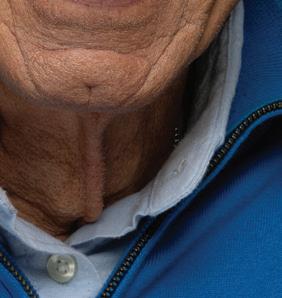






























In January, FKEC commemorated Florida’s Arbor Day by offering our “Seeds for Students” program and delivering a lesson in electrical safety to local students. Through the annual program, FKEC gave every fourth grader in our Upper and Middle Keys schools a special planting kit containing instructions, biodegradable peat pots, soil pellets, and seeds —all the essentials for cultivating native Bahama Senna (or Bahama Cassia) trees. FKEC Environmental Services Manager Sara Hamilton also shared how Arbor Day came to exist and the importance and many benefits of trees.
While at Key Largo, Plantation Key, Treasure Village Montessori, Ocean Studies and Stanley Switlik schools, FKEC also provided an electrical safety demonstration. The live line session, overseen by Safety Director Raymond Turner, offers practical examples of the potential consequences of contact with electricity. Students also gained valuable insights into preventing outages caused by trees and balloons that contact power lines.
For those who missed Florida’s Arbor Day this year, National Arbor Day is celebrated on the last Friday in April. To delve deeper into the significance of Arbor Day, visit www.arborday.org. n


